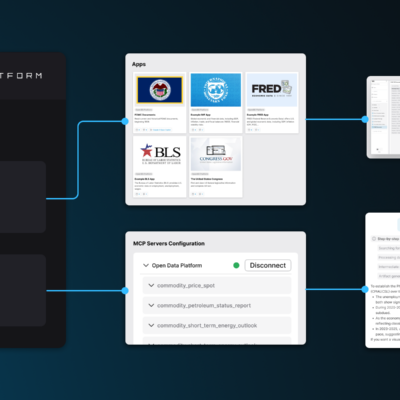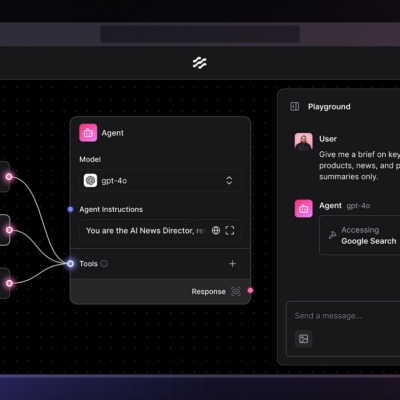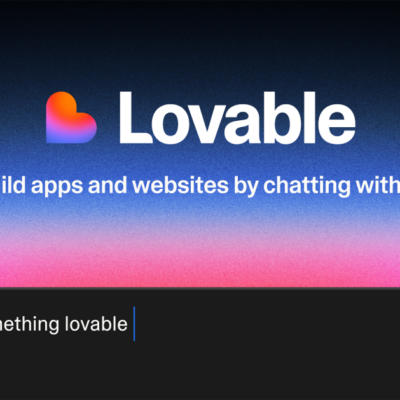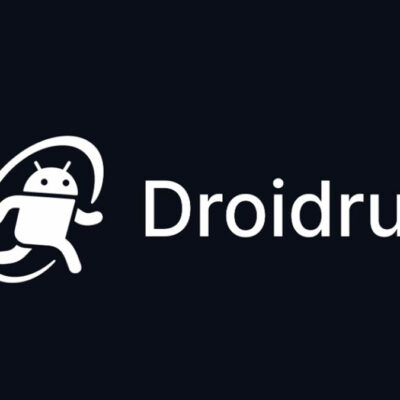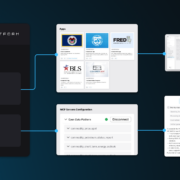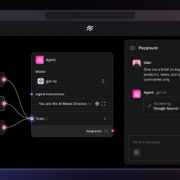If you have ever tried to run a “faceless” YouTube channel or manage a content production pipeline, you know the struggle. The promise of YouTube automation often turns into “project management hell.” You aren’t filming, sure, but you are managing scripts, waiting for renders, and paying for individual voiceovers. That isn’t automation; that’s just outsourcing.
True YouTube Automation with AI Agents is something entirely different. I’m talking about a system where you drop a single idea into a database, and intelligent AI agents pick it up to write the script, generate custom anime-style visuals, animate those visuals, create professional voiceovers, add background music, burn in subtitles, and schedule the upload to YouTube via Blotato.
In this guide, I’m going to walk you through a sophisticated workflow using n8n (a powerful workflow automation tool) that orchestrates various AI models to build a self-running content machine. This setup can cut production workloads by 90% while producing consistent, high-quality video content.
The Shift: From Simple Scripts to LangChain Agents
Most automation tutorials just show you how to generate text. This workflow is different because it uses LangChain Agents inside n8n. These aren’t just text generators; they are systems designed to “think,” plan scenes, and execute specific tasks within a production pipeline.
In the workflow provided, we utilize specific agents for:
- Idea Agent: Expands a simple ID or concept into a full narrative arc with character details, visual styles, and color palettes.
- Video Agent: Converts narrative descriptions into precise image prompts and aspect ratios.
- Narration Agent: Writes concise, witty commentary for the voiceover.
- Production: Orchestrates the generation of media assets and final assembly.
By moving from a linear script to an “AI-agent” model, you ensure that the visuals actually match the story. Let’s dive into how to build this infrastructure.
DOWNLOAD:
- Workflow: https://romhub.io/n8n/Anime_Video_Shorts_Automator
- Template Airtable: https://romhub.me/3du4wfrThe Core Tech Stack
To build this engine, we need specific tools to work in harmony. Based on the workflow file, here is the exact stack:
- n8n: The central nervous system. This is where the workflow lives, utilizing LangChain nodes to manage AI logic.
- Airtable: The brain and memory. This stores your video ideas (Dashboard) and individual generated scenes (Production).
- OpenRouter: The intelligence. We use this to access LLMs (Large Language Models) that power the “Brain” and “Think” nodes for the agents.
- Kie.ai: The visual factory. This API is used to generate images (via Nano Banana) and convert images to video (via Bytedance V1 Lite).
- Fal.ai: The production studio. This handles voice generation (via ElevenLabs integration), audio mixing, video rendering (FFmpeg), and auto-subtitling.
- Blotato: The social media manager. Used for scheduling and uploading the final file to YouTube. If you want to save costs, you can use Postiz – an open-source platform for managing and scheduling social media accounts.
Step 1: Setting Up the “Brain” (Airtable)
Your workflow needs a place to store data as it moves through the pipeline. Airtable acts as your visual database.
You need two main tables in your base:
- Anime Video DashB (Dashboard): This holds the core concept. Key fields include
ID,Status(set to “Todo” to trigger the flow),YouTube Title,visual_style,character, andmusic_url. - Production Table: This captures the granular details for every single generated scene. It creates records linked to the Main ID containing
Image URL,Video URL,Voice URL, andPrompt.
Configuration:
In n8n, the workflow starts with a Schedule Trigger followed by an Airtable Search node that looks for records in the Dashboard where Status equals Todo.
Step 2: The Orchestrator (n8n & LangChain)
The heart of this workflow is the LangChain implementation. Unlike standard automation, this workflow uses a “Brain” (OpenRouter Chat Model) connected to a “Think” tool.
- Idea Agent: It takes your input and outputs a structured JSON array of scenes. It decides the story arc (Intro, Build-up, Conclusion) and ensures the captions are under 12 words for pacing.
- Split Out: The workflow creates a loop. It splits the scenes so that n8n processes one scene at a time (generating image, video, and voice for Scene 1, then Scene 2, etc.).
Step 3: Visual Generation (Kie.ai)
This workflow moves away from generic stock footage by generating custom anime-style assets using Kie.ai.
Phase A: Image Generation (Nano Banana)
The workflow sends the “Final Prompt” and “Aspect Ratio” to Kie.ai using the google/nano-banana-edit model.
- The Goal: It generates a static image based on your character and visual style definitions.
- Data Flow: The resulting Image URL is extracted and saved back to your Airtable Production table.
Phase B: Image-to-Video (Bytedance)
Static images are boring. We need movement. The workflow takes that newly generated image and feeds it back into Kie.ai, this time utilizing the Bytedance V1 Lite Image-to-Video model.
- The Result: A 5-second dynamic clip (
resolution: 1080p) that animates the character or scene. - Wait Nodes: You will notice “Wait” nodes (100ms, 210ms) in the workflow; these are crucial to allow the API time to process the rendering before fetching the result.
Step 4: Audio and Assembly (Fal.ai)
Now that we have silent video clips, we need to give them a voice and stitch them together. Fal.ai is used here as a powerhouse for media manipulation.
Voiceovers (ElevenLabs via Fal)
The workflow sends the “Commentary/Caption” to Fal.ai, which routes it to the ElevenLabs Turbo v2.5 engine.
- Voice: The workflow is set to use the “Rachel” voice.
- Settings: It applies stability (0.5) and similarity boost (0.75) to ensure a natural performance.
The Merge & Subtitles
Once all scenes are generated for a specific Video ID, the workflow aggregates them.
- FFmpeg Compose: A
Mergenode sends the video tracks, audio tracks, and background music (looped) to Fal.ai’s FFmpeg API. It calculates timestamps dynamically to ensure the audio syncs perfectly with the video. - Auto-Subtitles: The merged video is sent to Fal.ai’s
auto-subtitleutility. It burns in subtitles using the “Montserrat” font (Bold, White with Purple highlight) to maximize viewer retention.
Step 5: Distribution (Blotato)
Finally, we automate the upload. Instead of a direct YouTube API integration (which can be finicky with tokens), this workflow uses Blotato.
- Upload to Blotato: The final video file (with subtitles) is uploaded to Blotato’s media library.
- Schedule on YouTube: The workflow calculates a
Scheduled Date(incrementing the date by 1-4 days to create a content buffer). - Post: It sends the Title, Description, and Media URL to Blotato, targeting YouTube Shorts with a “Public” privacy status.
Executing and Scaling the Workflow
Once everything is configured, the process of creating a video becomes incredibly simple:
- Input: Open your Airtable “Dashboard.” Enter a new ID (e.g., “Anime_01”), a character description, and a visual style. Set the status to Todo.
- Run: The Schedule Trigger in n8n picks up the new item.
- Wait: The agents get to work:
- Idea Agent structures the scenes.
- Kie.ai generates the art and animation.
- Fal.ai generates the voice and merges the final cut.
- Output: The final video URL is updated in Airtable, the status changes to Done, and the video is scheduled on Blotato.
Conclusion
Building a YouTube Automation with AI Agents system is no longer about finding the cheapest freelancer; it is about engineering the best workflow. By combining n8n with the specialized power of Kie.ai for visuals, Fal.ai for media processing, and Blotato for management, you are building a self-sustaining media company.
This approach transforms you from a content creator into a content architect. You provide the vision; the agents handle the labor.

